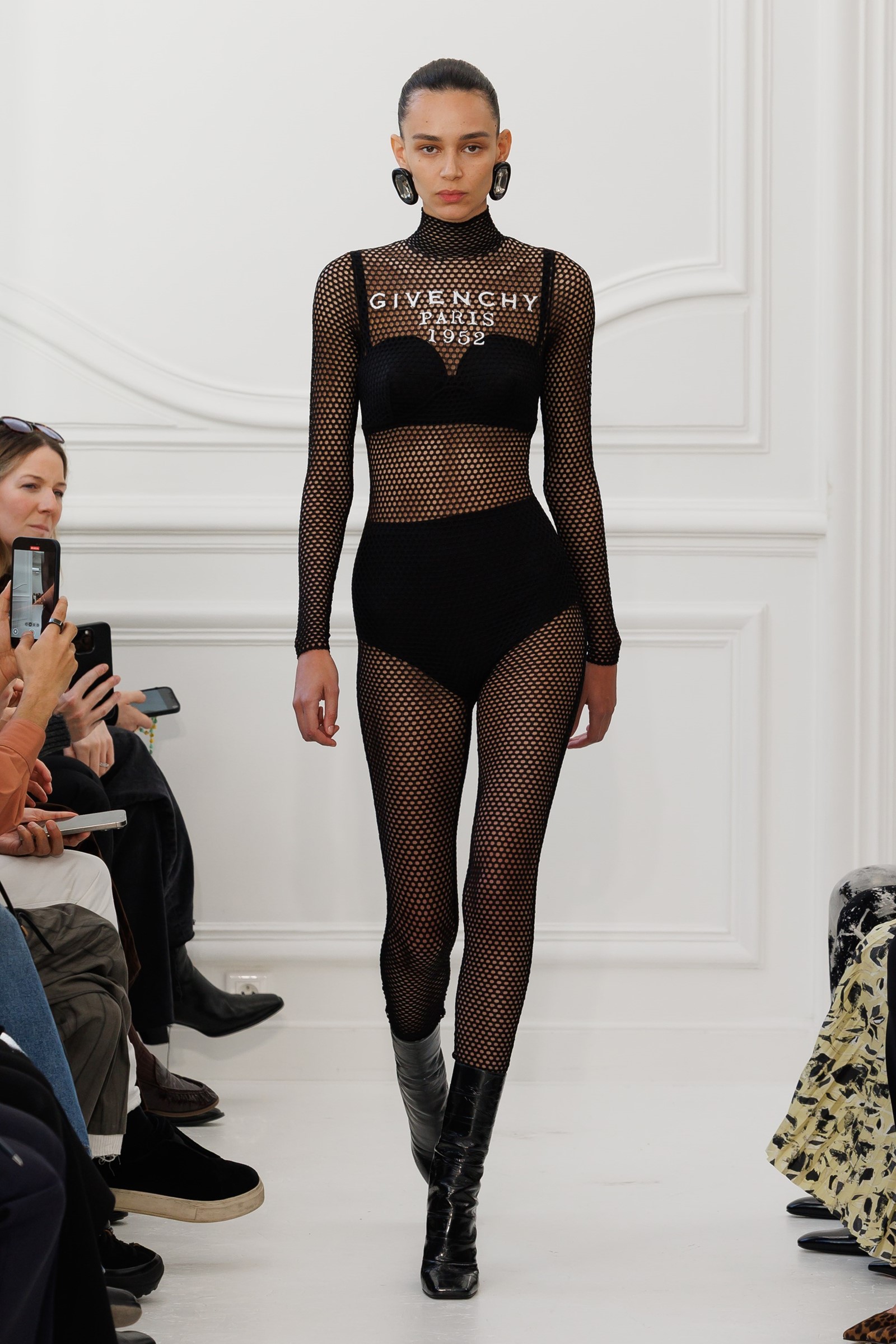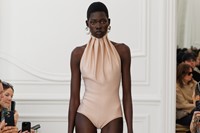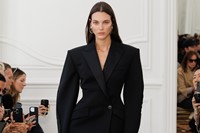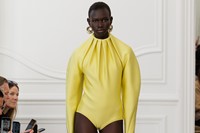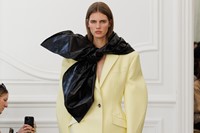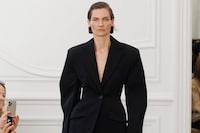Work in progress. Sarah Burton has always been a craftswoman at heart – it’s rare to see a creative director taking their bow with a pincushion strapped to their wrist, as she often did in her previous role at Alexander McQueen. And so, for her debut at Givenchy, she went back to a place of comfort, security. “It’s my natural instinct to go back to pattern-cutting, to craftsmanship,” she stated before the show. “It’s what I feel, how I work, and want to do.” And that was how she modestly marked her debut at the house of Givenchy, with a sense of a house identity being reconstructed, and clothes that were odes to the process of fashion.
Indeed, you couldn’t get closer to craft than we did on Friday morning, at a show staged in Givenchy’s historic headquarters at 3, Avenue Georges V, the salons below where the ateliers sit and where the founder Hubert de Givenchy himself used to present his collections to clients back in the day. “To go forward, you have to go back to the beginning,” Burton said. “To me, that’s about the atelier. It’s the heart and soul of Givenchy.”
That soul sits across the road from the house of Balenciaga at number 10, which is no coincidence. An intimate and ardent admirer of Cristóbal Balenciaga – although he never worked under him – Givenchy opened his house in 1952, and moved, literally, into Balenciaga’s shadow on that avenue in 1955. Quickly, he became the young pretender to the couturier revered by Paris fashion as “the master of us all”. When Balenciaga retired, he directed his clients across the rue to his younger follower. And even before that, he’d guided a film star named Audrey Hepburn away from his own severe style to the gentler looks of his protege when she sought a wardrobe for her film Sabrina. That blossomed into an eight-film partnership, a firm friendship, and a figure who defined the style of the house. Givenchy referred to her as his sister.
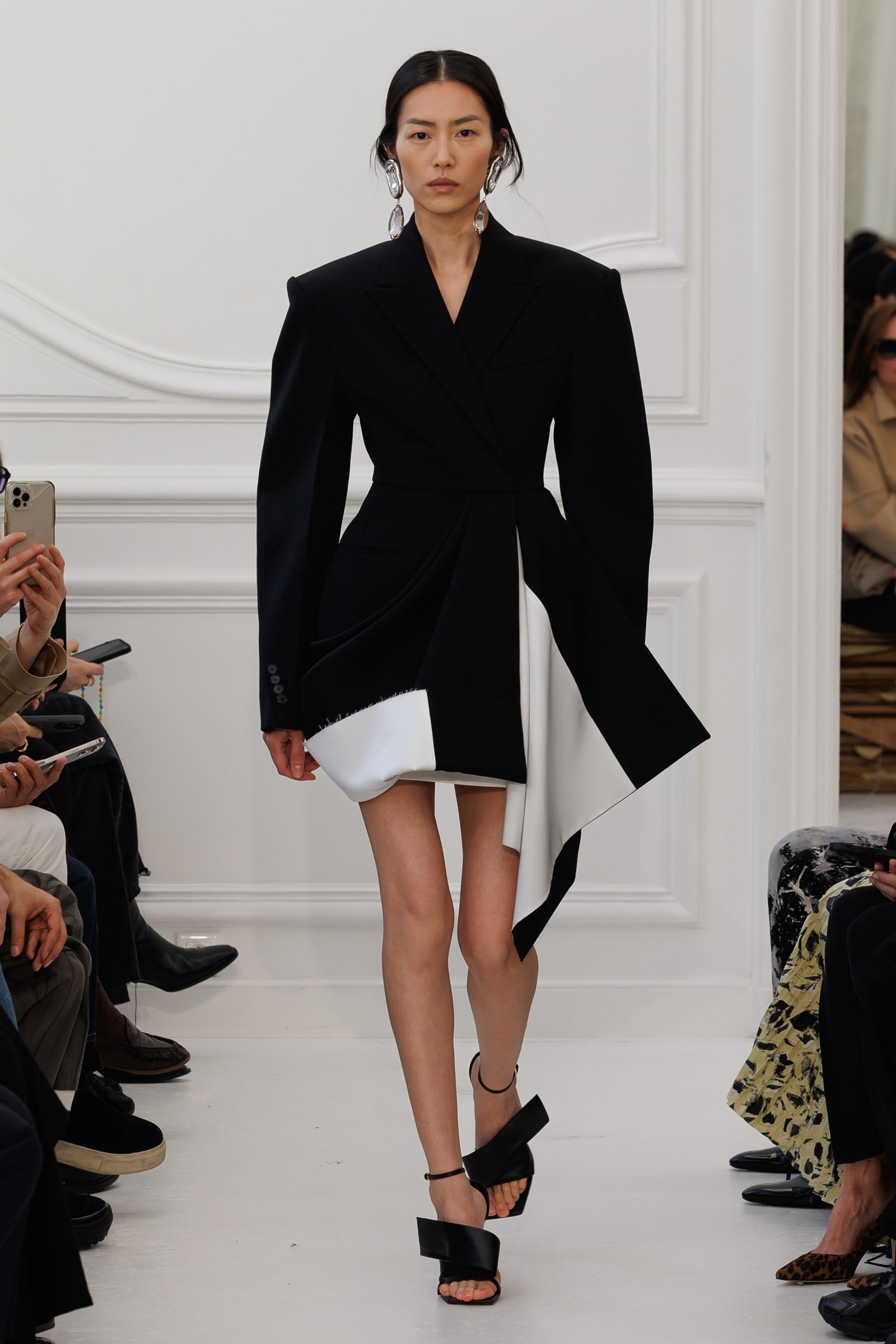
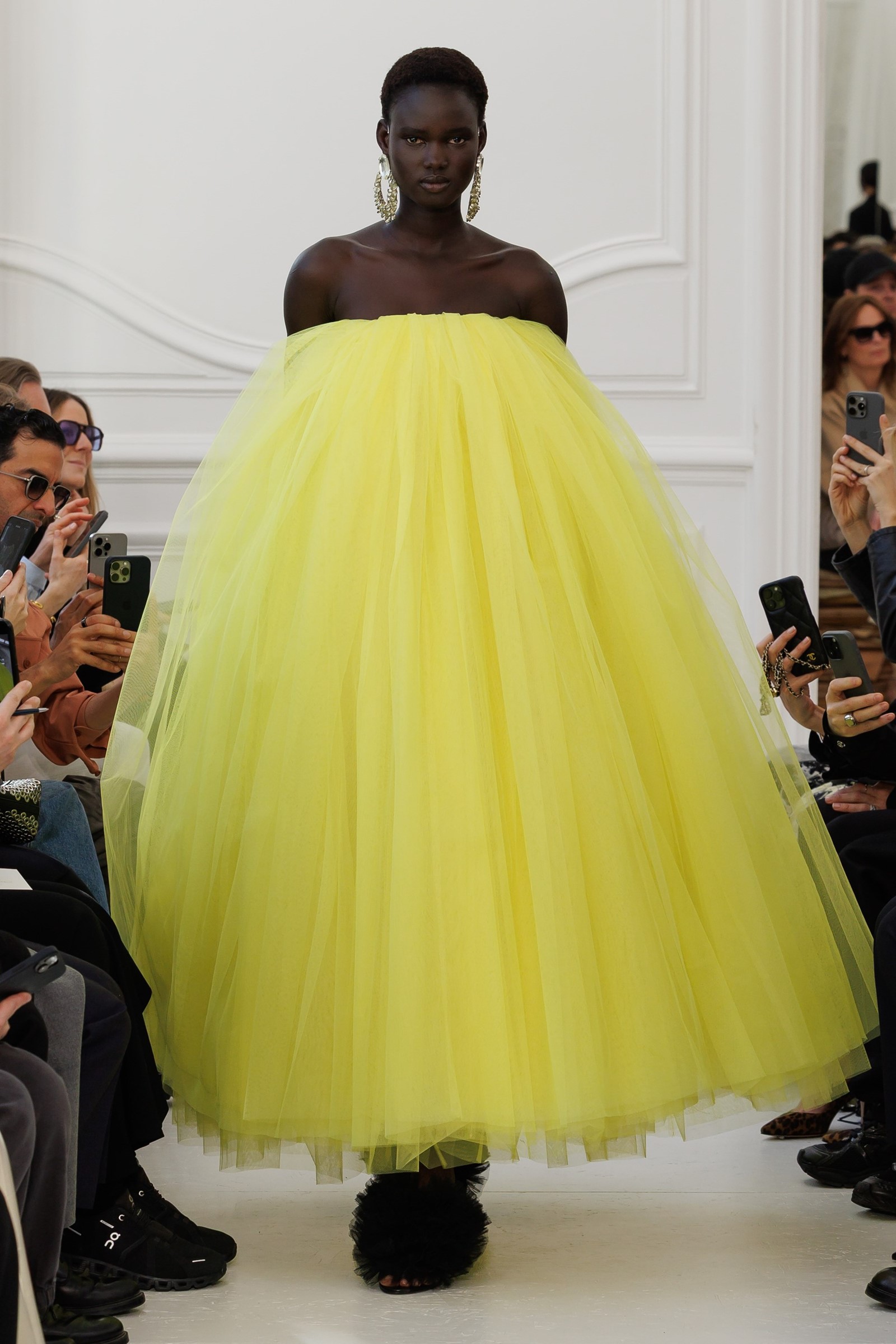
But Sister Audrey only stretches so far. Her pin-neat, Pinterest-pleasing style, engineered by Givenchy, has since become a cliché of mid-century elegance. It’s anchored in the past – costume party attire for Real Housewives of Salt Lake City brunches, rather than aspirational dressing for 21st-century women. Yet other than Hepburn redux, Givenchy’s contemporary identity is hazy – the house has cycled through creative heads and shifted from sexy, to strict, to sports under the last three – Riccardo Tisci, Clare Waight Keller and Matthew Williams. In a sense, an artistic director arrives at Givenchy with a blank slate, ready to curate their own view of the house, and remind everyone what Givenchy stands for.
Couture was Burton’s focus, even though this was a ready-to-wear collection. It began with a slick bodysuit as a reminder of a Stockman stamped with Givenchy’s logo, shown to a clustered audience seated not on spindly gilt chairs but stacks of brown-paper envelopes, the kind that hold dressmaking patterns for safe-keeping. And the clothes themselves were all about cut – both in their construction, and deconstruction. Delicate lace evening dresses were “hacked” (Burton’s words, not mine) to abbreviated lengths, while other skirts and jackets had their hems left raw, some dresses seemingly to bubble out of raw bolts of fabric draped spontaneously against the body. There were gestures towards Givenchy motifs – reminders of the past, reimagined. A white shirt worn as an asymmetric dress echoed the Bettina blouse, named after the model Bettina Graziani. Her spirit was also evoked by a corset-dress patched with make-up compacts and powder-puffs, “Bettina coming to her fitting and spilling the treasures of her handbag,” according to notes scribbled on the look.
That’s also a canny reminder of Givenchy’s big cosmetics business – a Burton wink to what the name Givenchy represents, to many. What she wants it to represent, however, came through in the tailoring, pulled around the body, twisted, seams exposed, in fine black grain de poudre. Precise, precise, precise. Again, her message was honed down top cut – a slice down the back to open a jacket, a jumpsuit carved out. They were Burton making her mark – her first razor-sharp swipes at pruning Givenchy’s sprawling heritage into a new shape. For a house that Burton herself declared ‘under construction’, those suits made the sharpest of starts.
